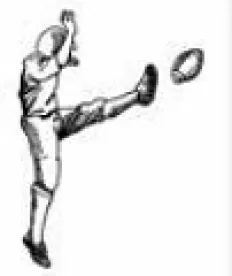In an order issued June 16, 2011, FERC denied appeals of NERC determinations to register two wind generators with significant generator leads as “Transmission Owners” (TO) and “Transmission Operators” (TOP), but in the process may have given these generators the regulatory certainty they were seeking. Cedar Creek Wind Energy, LLC and Milford Wind Corridor Phase I, LLC, 135 FERC ¶ 61,241 (2011). The decision creates significant doubt, however, for other generators regarding their status as TO/TOPs and their reliability compliance obligations.
The dispute arose when the Western Electric Coordinating Council (WECC) registered the two wind generators as TOs and TOPs based solely on ownership and operation of generator lead lines sized 100 kV or higher between the wind generators and the transmission grid. This classification subjected Milford and Cedar Creek to extensive WECC and North American Electric Reliability Corporation (NERC) mandatory reliability standards applicable to TO/TOPs, violations of which can be enforced with significant monetary penalties.
NERC subsequently affirmed WECC’s registration decisions, even while a NERC-commissioned task force report (GO/TO Report) addressed the overarching question of reliability impacts of generator leads owned by Generator Owners (GO) and Generator Operators (GOP). The GO/TO Report found there were minimal reliability impacts which could be resolved if a very limited set of generator related standards were required for lead lines. The GO/TO Report also recommended that NERC stop registering GO/GOPs as TO/TOPs. The GO/TO Report was not controversial and resulted in the establishment of NERC Project 2010-07, designed to implement the limited standards. In registering Milford and Cedar Creek, NERC found the results of the GO/TO Report and the existence of Project 2010-07 irrelevant to its decision.
Milford and Cedar Creek appealed the NERC registration decisions to FERC, arguing that NERC had failed to show these generators’ lead lines were integrated transmission elements— a prerequisite for being registered as a TO/TOP— or that the generators were otherwise important to the reliability of the transmission grid. Milford and Cedar Creek also argued that their registrations as TO/TOPs would significantly increase compliance burdens, and, if applied to the industry as a whole, could have a significant chilling effect on the development of new generation resources, particularly renewable energy resources that are often located quite far from the transmission system and must use long generator lead facilities to reach the grid. NERC responded by asserting that, as these facilities were connected to the grid at voltages 100 kV or greater and connected a "critical resource" (a generator), they must be registered as TO/TOPs.
The reasoning in NERC’s decision was generic in nature (finding that any generator that was connected to the grid at 100 kV or above owned and operated “transmission” should be registered as a TO/TOP). As a result of the generic implications of this analysis, Milford’s and Cedar Creek’s appeals were supported by a broad spectrum of the electric industry, including the American Wind Energy Association, Edison Electric Institute, and Electric Power Supply Association, as well as many individual generators.
In its June 16 order, FERC agreed with NERC and WECC that both facilities should be registered as TO/TOPs. However, FERC's order significantly limited the consequences of such registration, identifying just 17 of the 623 NERC reliability requirements which each generator would be required to comply with. FERC also directed NERC, WECC and the generators to negotiate as to any other applicable standards. In doing so, FERC rejected arguments by NERC and WECC that all TO/TOP reliability standards should apply to these generators unless they could prove otherwise through the NERC audit process. FERC further “encouraged” NERC to generically address the issue of how to ensure reliability over generator lead facilities by finalizing Project 2010-07.
Despite the FERC order’s 33-page length, there is little in the way of substantive analysis, and there are significant gaps in reasoning. In particular, FERC held that the analysis of an entity’s registration status was “fact-specific,” citing its 2008 decision upholding NERC’s registration of a large nuclear generator as a TO/TOP based on its generator lead facilities. New Harquahala Generating Company, LLC, 123 FERC ¶ 61,173, order on clarification, 123 FERC ¶ 61,311 (2008). However, neither FERC nor NERC ever meaningfully discussed or analyzed the facts relevant to Milford or Cedar Creek; rather, both FERC and NERC summarily concluded that the wind generators should be registered as TO/TOPs based upon an ill-defined “reliability gap.” FERC also explicitly declined to decide the question of whether Milford’s and Cedar Creek’s generator lead facilities actually constituted “integrated transmission elements,” a threshold issue for an entity to be registered as a TO/TOP under NERC’s registration standards.
While it is difficult to understand what facts render Milford and Cedar Creek TO/TOPs, FERC’s decision provides a measure of certainty for the two wind generators at issue. The same cannot be said of the rest of the industry. By FERC claiming its order is fact-specific, all generators interconnected to the grid at 100 kV or higher are exposed to involuntary registration and the obligation to comply with the entire panoply of TO/TOP standards based upon NERC's existing analysis, which FERC did not address in any way. By failing to address the generic issues raised by these registrations, FERC has done a disservice to generators, with a particularly negative impact on renewable generators, which often are located remotely from the grid. With no relief from FERC, generators must hope FERC’s “encouragement” to NERC to implement Project 2010-07 will result in the project moving forward and this issue being thoughtfully resolved along the lines of the expert recommendations found in the GO/TO Report. Until those recommendations are implemented, NERC's stated policy as expressed in the Milford and Cedar Creek decisions, is that all generators connected to the grid at 100 kV or greater should be registered as TO/TOPs with all the attendant uncertainty.



 />i
/>i

